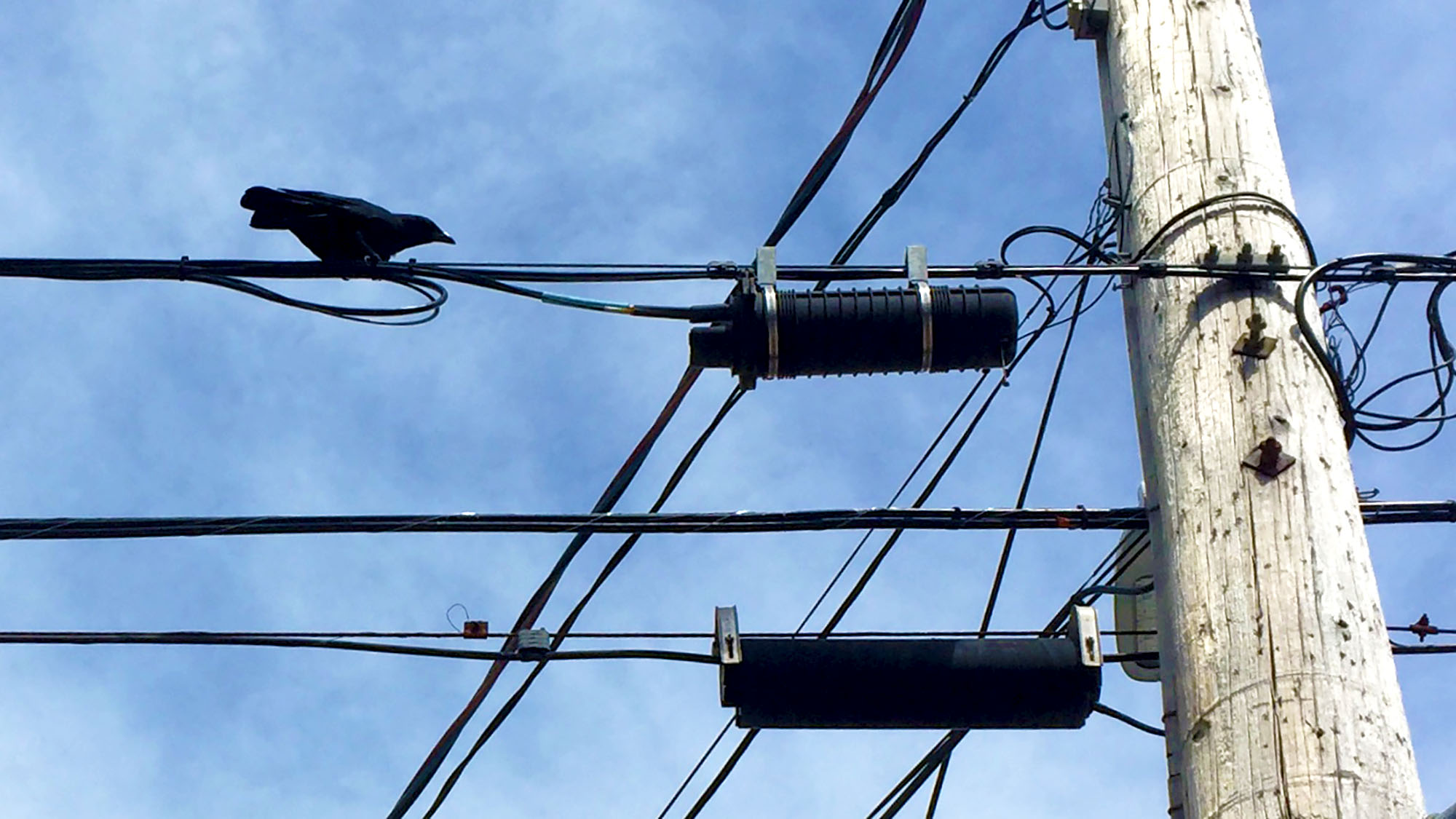Should Nova Scotia be re-evaluating its power infrastructure?
Current power lines aren't good enough for changing weather, climate scientist says

caption
A crow walks along a Novia Scotia power line.Power outages have been a recurring reality for Halifax residents over the last year, raising questions about the vulnerability of the city’s electrical infrastructure.
In late December, 17,000 homes were left without power in Bridgewater, Mahone Bay, and New Germany. A week before, a bird collided with equipment, causing an outage for more than 20,000 homes on the Halifax peninsula. And most recently, 5,800 households lost power after a driver collided with a utility pole in Halifax.
While Nova Scotia Power, the province’s monopolized private power company, said its current electrical grid is resilient enough, Peter Duinker has doubts.
Duinker, a Dalhousie professor at the School for Resource and Environmental Studies, believes that Halifax’s current system of above-ground power lines is vulnerable to increasingly unpredictable and extreme weather conditions due to climate change.
“Through climate change creating more wicked storms — storms we can’t predict what they’ll do — power outages are likely to continue to harass us as long as we keep that infrastructure in the sky,” Duinker said.
According to statistics published by the Canadian Electricity Association (CEA), extreme weather incidents have steadily increased over the past six years . The CEA has been tracking these events since 2003.
Duinker also believes it’s in Halifax’s best interest to build new subdivisions with underground power.
“If you don’t do it when you build a neighbourhood, it’s extremely difficult to do afterwards,” he said.
“When we build new subdivisions in and around Halifax we put power lines up. I think that is a mistake.”
But Nova Scotia Power said the expense of changing to underground power lines is too high.
Paul Casey, the vice-president of transmission, distribution and delivery at Nova Scotia Power, said the company spends approximately $100 million a year on their transportation and distribution system.
“About $20 million of that goes to cutting trees, and about $80 million replacing old equipment and adding new equipment,” he said.
Though some urban areas have underground power and more modern, expensive power lines, the majority of HRM has overhead power lines.
Nova Scotia Power estimates that installing underground power would amount to approximately $1 million per kilometre, and would still be vulnerable to outages.
The company abides by regulations that only mandate them to create overhead power lines unless funded by developers to dig trenches for underground power.
Bylaws would have to be put in place if Nova Scotia wanted to enforce a submerged electrical grid for new homes.
“We have justification to go into a new subdivision and build overhead — only overhead — power lines,” he said.
“If the developer wants it to be underground, they can pay the difference between the overhead cost and the underground cost. It’s totally up to the developer.”
About the author
Michael Trombetta
Michael is a student writer at King's College. He's an English literature graduate of Ryerson University. Interested in people, our environment,...
